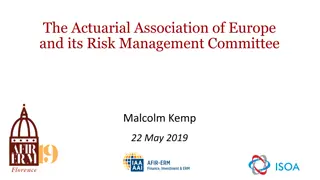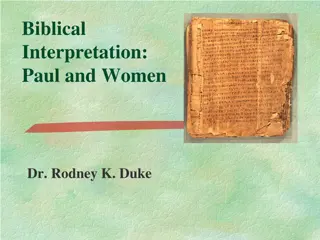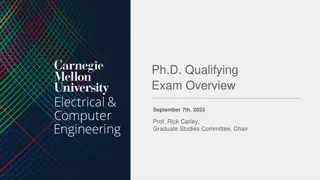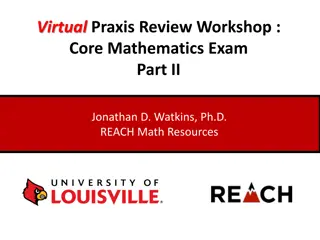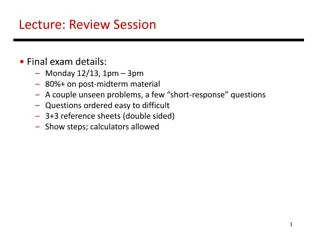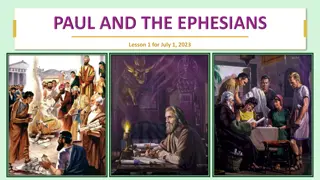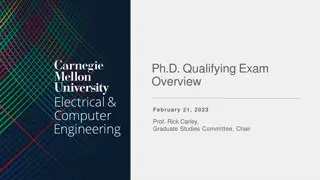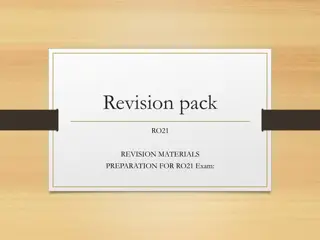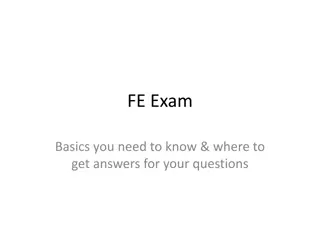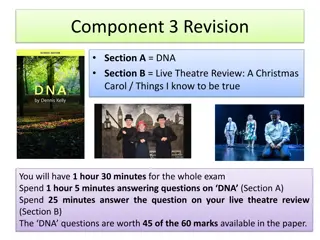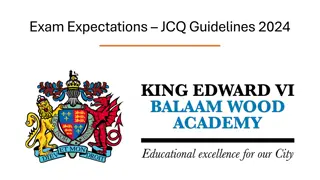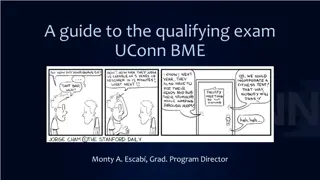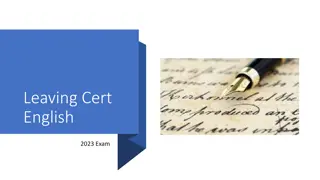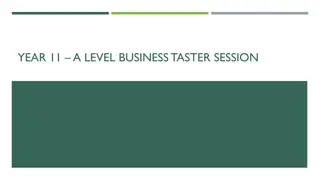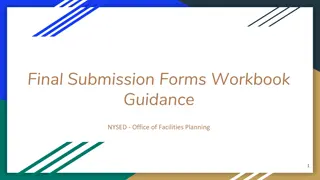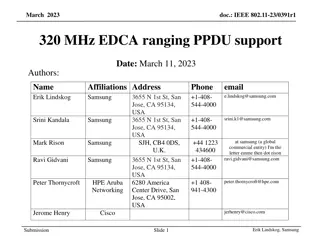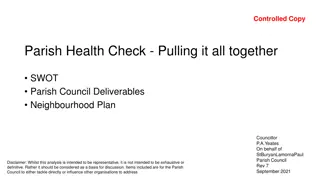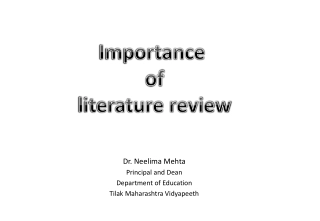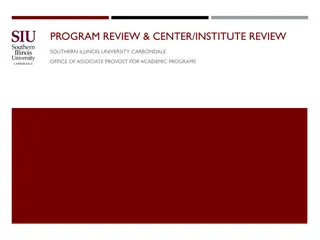Final Exam Review for AAE 320 - Paul D. Mitchell
Get ready for the final exam in AAE 320 with an overview of new topics, an explanation of what to expect, and tips on how to study effectively. Covering subjects like ag policy, federal support of US agriculture, commodity programs, and more, this review will help you prepare for success. Don't miss out on valuable insights and information to ace your exam!
Download Presentation

Please find below an Image/Link to download the presentation.
The content on the website is provided AS IS for your information and personal use only. It may not be sold, licensed, or shared on other websites without obtaining consent from the author. Download presentation by click this link. If you encounter any issues during the download, it is possible that the publisher has removed the file from their server.
E N D
Presentation Transcript
Final Exam Review AAE 320 Paul D. Mitchell
Final Exam Final Exam Saturday Dec 17, 2022 Saturday Dec 17, 2022 10:05 AM 10:05 AM 12:05 PM 1120 BIOCHEMISTRY 1120 BIOCHEMISTRY THE USUAL CLASSROOM THE USUAL CLASSROOM 12:05 PM
Goal Goal Explain what to expect for final exam Overview new topics since last exam Idea of how to study
Course Overview Course Overview Introduction Exam 1 Production Economics Exam 1 Farm Finance Exam 2 Taxes and Business Arrangements Exam 2 Ag Policy New Commodity Programs Crop Insurance
New Topics: Ag Policy New Topics: Ag Policy Introduction to Federal Support of US Agriculture Commodity Programs Crop Insurance
Intro to Federal Support of US Ag Intro to Federal Support of US Ag Introductory lecture Stylized Facts about US government spending Good for true false or short answer Where does agricultural support fit into overall spending Farm Bill Major spending categories and relative size COVID support compared to regular Farm Bill support?
Commodity Support Programs Commodity Support Programs Know basic idea of how each program works Price Loss Coverage (PLC) Agriculture Risk Coverage (ARC) Marketing Assistance Loans (MAL) Loan Deficiency Payments (LDP) Dairy Margin Coverage (DMC) Problem Set #7
Commodity Support Programs Commodity Support Programs Eligibility: What makes you eligible to even apply/enroll? What agency? What triggers payments? Given facts, calculate payment (Prob Set #7) What changes payments? How payments change under different circumstances (Prob Set #7)
Commodity Support Programs Commodity Support Programs Terms to know: Base Acres, Payment Yield, Reference Price, County Revenue Guarantee, Loan Rate, National Marketing Year Average Price, Posted County Price, Milk Margin Guarantee Problem Set # 7 a good guide to the types of problems See slides for general facts to know, especially on MFP & CFAP For ARC, do not worry about how to calculate county revenue guarantee, just how it works once the guarantee is known
Crop Insurance Crop Insurance Crop Insurance Programs Yield vs. Revenue Insurance Coverage Individual vs. Area-wide Coverage YP, RP, AYP, ARP How RP-HPE (harvest price exclusion) works differently than regular RP policy Farmer choices Coverage Level, Price Election, Unit Structure
Crop Insurance Crop Insurance Given the facts, know how to calculate indemnities What triggers payments? What circumstances change payments? Problem Set #8 for type of problems to expect Typical Wisconsin practices (stylized facts) Farmer participation rates in crop insurance What policy type, coverage level, price election, and unit structure do most Wisconsin farmers use?
Crop Insurance Crop Insurance Where do you buy crop insurance? Crop insurance subsidies and premiums What does subsidization of premiums means for farmer returns? Policy options: RP-HPE, SCO and ECO Crop insurance stylized facts Good for true/false & short answer questions Don t worry about DRP, MPP, WFRP, CAT, PRF,
Key Concepts to Know: Exam 1 Key Concepts to Know: Exam 1 1) Overview of WI Ag, The US Food System: Stylized facts 2) Partial Budget Analysis: Simple case 3) Single Input Optimality How much input to use: Value of Marginal Product = Input Price Able to apply in table and calculus formats No multiple input production problem in table or calculus 4) Cost Economics: Stylized facts Old exams have Average Cost, Marginal Cost, Supply Curve: we did not cover 5) Nitrogen in Agriculture, The More-on Principle: Stylized facts
Key Concepts to Know: Exam 2 Key Concepts to Know: Exam 2 1) Depreciation Methods Straight Line, IRS Method 2) Financial Analysis Read a Balance Sheet and Income Statement and calculate and interpret current ratio, debt to asset ratio, returns and rates of return, profit margins Issues: cost vs market basis, cash vs accrual accounting 3) Dairy Farming in Wisconsin, Inelasticity in Agriculture Stylized facts for True/False or short answer
Key Concepts to Know: Exam 2 Key Concepts to Know: Exam 2 Focus on the issues that stay the same, not details that vary Don t worry about % rates, annual/lifetime exclusion amounts Types of Taxes: Ordinary income, self-employment, capital gain, gift Basic idea of how taxes work: Revenue minus Costs Benefit of Section 179 Depreciation Gain = Sale Price Basis What triggers recognition of gain? Sell/buy or give/receive assets? Contribute to or remove from LLC or Corporation Why does Basis change? (Death, Depreciation)
Key Concepts to Know: Exam 2 Key Concepts to Know: Exam 2 Types of Business Arrangements Sole proprietor, partnership, corporation (C or S), limited liability company (LLC) Main differences: Formation, Taxation, Liability
Exam Study Exam Study Use old exams to understand what to expect Some have material we did not cover (e.g., AC, MC) New material an important focus Problem Sets #7 and #8 See slides above for key concepts and stylized facts Comprehensive Exam Focus on Key Concepts, Big picture, not details Basic things to remember 5 years from now


